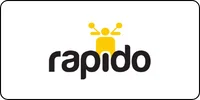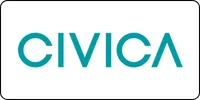Spoken English








Web Development Certification Course
The Spoken English certification course in Vadodara is thoughtfully designed for learners who have minimal to no prior experience with the English language. This course lays a strong foundation in everyday communication skills. Participants begin with the basics, including the English alphabet, pronunciation rules, and essential vocabulary, building up to structured conversations and real-world dialogue practice.
As part of the best Spoken English training in Vadodara, students are guided through a step-by-step approach that includes interactive speaking activities, common greetings, introductory phrases, and casual conversation techniques. The curriculum also strengthens grammar fundamentals and expands vocabulary through fun and engaging learning methods.
One of the highlights of this program is its focus on real-life scenarios, taught through role-plays, pronunciation drills, and listening exercises. These help learners gain fluency and boost confidence in daily communication. Additionally, cultural tips are shared to help students better understand the context of English usage in global settings.
For those seeking Spoken English coaching classes in Vadodara, this course offers an excellent opportunity to improve speaking skills, whether for personal growth, academic needs, job interviews, or travel. With expert trainers and a supportive learning environment, this course is ideal for becoming a fluent and confident English speaker.
What will I learn?
- Develop basic speaking and listening skills in English.
- Build a foundation of essential vocabulary and phrases for everyday communication.
- Understand and use basic grammar structures in spoken English.
- Improve pronunciation and fluency in spoken English at the beginner level.
Requirements
- While no prior knowledge of English is required, participants should have a basic understanding of the English language, including familiarity with the English alphabet and some common words or phrases.
- Consistent attendance is important for building and reinforcing language skills.
Spoken English Course Content
- Introduction to English Speaking:
- Basics of spoken English
- Importance of effective communication
- Common challenges in speaking English
- Vocabulary Building:
- Everyday vocabulary
- Vocabulary related to specific topics (work, travel, hobbies, etc.)
- Synonyms, antonyms, idioms, and phrasal verbs
- Grammar Fundamentals:
- Basic grammar rules (tenses, parts of speech, sentence structure)
- Common grammatical errors and how to avoid them
- Practice exercises to reinforce grammar concepts
- Pronunciation Practice:
- Correct pronunciation of consonant and vowel sounds
- Stress and intonation patterns in English
- Techniques for improving pronunciation
- Listening Comprehension:
- Listening to various accents and dialects
- Understanding different speech rates and styles
- Activities to improve listening skills
- Speaking Practice:
- Role-playing exercises
- Group discussions on various topics
- Presentations and public speaking practice
- Debates and discussions
- Conversational Skills:
- Small talk and social conversations
- Giving opinions, agreeing, disagreeing politely
- Asking questions and seeking clarification
- Cultural Context:
- Understanding cultural nuances in language use
- Differences in communication styles across cultures
- Tips for effective communication in multicultural settings
- Real-life Scenarios:
- Simulated real-life situations (ordering food, making phone calls, asking for directions, etc.)
- Role-plays to practice communication in various contexts
- Feedback and Evaluation:
- Regular feedback sessions with instructors or peers
- Self-assessment and reflection on progress
- Continuous evaluation of speaking skills with benchmarks for improvement
- Supplementary Materials:
- Audio and video resources for listening practice
- Reading materials to expand vocabulary and comprehension
- Online tools and apps for additional practice outside of class
- Final Assessment:
- Comprehensive assessment to evaluate overall speaking proficiency
- Certification or acknowledgment of completion
- Short Stories and Articles:
- Provide short stories or articles written in English for students to read aloud.
- Encourage them to focus on pronunciation, intonation, and fluency.
- After reading, discuss the main ideas and ask comprehension questions.
- Dialogues and Conversations:
- Create dialogues or conversations between two or more characters.
- Students can take turns reading different parts of the dialogue, practicing speaking naturally in different roles.
- Emphasize expression and tone to convey emotions accurately.
- News Articles:
- Select news articles from reputable sources written in simple English.
- Students can read the articles aloud, focusing on clear pronunciation and understanding.
- Discuss the main points of the article and encourage students to express their opinions.
- Poems and Rhymes:
- Choose poems or rhymes with rhythmic patterns and rhyming words.
- Students can read the poems aloud, paying attention to rhythm, stress, and intonation.
- Practice repeating lines to improve fluency and pronunciation.
- Role-Playing Scenarios:
- Create role-playing scenarios based on real-life situations (e.g., ordering food at a restaurant, making a phone call, asking for directions).
- Provide scripts for the scenarios and assign roles to students.
- Students read their parts aloud, focusing on natural speech patterns and appropriate expressions.
- Public Speeches and Presentations:
- Provide excerpts from famous speeches or presentations.
- Students can read the speeches aloud, focusing on clarity, pace, and emphasis.
- Discuss the rhetorical devices used in the speeches and encourage students to practice delivering their own speeches.
- Reading Aloud Practice:
- Choose passages from English books, newspapers, or online articles.
- Students take turns reading aloud while others listen.
- Encourage peer feedback on pronunciation, fluency, and expression.
- Interactive Reading Activities:
- Use interactive reading activities such as reading comprehension quizzes, fill-in-the-blank exercises, or matching exercises.
- Students read the text and complete the activities individually or in pairs, promoting active engagement with the material.
- Audio-Text Synchronization:
- Provide audio recordings of texts along with written transcripts.
- Students listen to the recordings while following along with the text, helping them associate spoken words with written words and improve pronunciation and comprehension simultaneously.
- Dictation Exercises:
- Read a passage aloud at a moderate pace, and students write down what they hear.
- Afterward, review the passage together, discussing any pronunciation or comprehension issues.
- Dialogues and Conversations:
- Ask students to write dialogues between two or more characters on various topics or situations.
- Encourage them to use natural language and expressions they would use in real conversations.
- After writing, students can practice reading their dialogues aloud to focus on spoken expression.
- Speech Outlines:
- Have students prepare outlines for short speeches on topics of interest or importance to them.
- Encourage them to organize their thoughts logically and include key points they want to convey.
- After writing the outlines, students can practice delivering their speeches aloud, focusing on fluency and clarity.
- Role-Playing Scenarios:
- Provide prompts for role-playing scenarios and ask students to write scripts for the interactions.
- Encourage them to include dialogue tags, descriptions of actions, and natural language.
- After writing, students can act out the scenarios with classmates, focusing on spoken communication.
- Phone Call Scripts:
- Have students write scripts for phone conversations on different topics (e.g., making a doctor’s appointment, calling customer service).
- Encourage them to include greetings, introductions, and polite phrases commonly used in phone conversations.
- After writing, students can practice role-playing the phone calls, focusing on clear pronunciation and effective communication.
- Storytelling:
- Ask students to write short stories or anecdotes about personal experiences or fictional events.
- Encourage them to use descriptive language, dialogue, and narrative techniques to engage the reader.
- After writing, students can practice telling their stories aloud, focusing on storytelling skills and spoken expression.
- Speech Critiques:
- Provide transcripts or recordings of speeches or presentations by famous speakers.
- Ask students to analyze and critique the speeches, focusing on content, delivery, and effectiveness.
- Encourage them to write their critiques and discuss them in class, promoting critical thinking and oral communication skills.
- Public Notices or Announcements:
- Have students write public notices, announcements, or advertisements for imaginary events or activities.
- Encourage them to use persuasive language and clear communication to attract the audience’s attention.
- After writing, students can practice presenting their notices or announcements aloud, focusing on spoken expression and engagement.
- Interview Preparation:
- Ask students to write responses to common interview questions or prepare their own questions for interviewing someone else.
- Encourage them to include relevant examples, anecdotes, and language appropriate for professional communication.
- After writing, students can practice conducting mock interviews with classmates, focusing on spoken communication skills.
- Listening to Audio Recordings:
- Play audio recordings of native speakers speaking at a moderate pace.
- Choose a variety of topics, such as news reports, interviews, podcasts, or speeches.
- Encourage students to listen attentively and try to understand the main ideas and key details.
- Listening Comprehension Activities:
- Provide comprehension questions or tasks related to the audio recordings.
- Ask students to answer questions about the content, summarize what they heard, or fill in missing information.
- This helps reinforce listening skills and comprehension abilities.
- Shadowing:
- Play short audio clips of native speakers speaking and ask students to repeat what they hear immediately after.
- Encourage students to mimic the speaker’s pronunciation, intonation, and rhythm as closely as possible.
- This exercise helps improve pronunciation, fluency, and listening accuracy.
- Dictation:
- Play audio recordings of short passages and ask students to write down what they hear.
- Start with slower-paced recordings and gradually increase the difficulty as students progress.
- Afterward, review the passage together and discuss any pronunciation or spelling issues.
- Interactive Listening Exercises:
- Use online platforms or apps that offer interactive listening exercises.
- These exercises may include multiple-choice questions, gap-fill activities, or matching tasks based on audio content.
- Students can complete these exercises individually or in pairs, providing immediate feedback on their listening skills.
- Listening to Songs and Lyrics:
- Play songs in English and provide students with the lyrics.
- Ask students to listen to the songs while following along with the lyrics.
- Encourage them to pay attention to pronunciation, vocabulary, and language use in the songs.
- Role-Playing Listening Activities:
- Create role-playing scenarios based on audio clips or dialogues.
- Provide scripts for the scenarios and assign roles to students.
- Students listen to the audio clips and then act out the scenarios, focusing on listening comprehension and spoken communication.
- Listening to Different Accents:
- Expose students to a variety of English accents by playing audio recordings from different regions or countries.
- Encourage them to pay attention to the pronunciation, intonation, and vocabulary differences among different accents.
- This helps students become more familiar with diverse English accents and improves their listening comprehension skills.
- TED Talks or Speeches:
- Play TED Talks or speeches by native speakers on various topics.
- Encourage students to listen actively, taking notes on key points and interesting ideas.
- Afterward, discuss the content of the talks and ask students to share their thoughts and reflections.
- Podcasts:
- Assign podcasts on topics of interest to students.
- Encourage them to listen to the podcasts regularly and take notes on the main ideas, vocabulary, and any unfamiliar expressions.
- Discuss the content of the podcasts in class and encourage students to share their opinions and insights.
- Variables and data types
- Constants and literals
- Operators and expressions
- Input and output operations
Get in touch
400+ Global Employment Partners







































Why Choose Spoken English Certification Course from Bright Computer Education?

Designed Curriculum
Our curriculum covers everything from basic to advanced topics. Topics include variables, data types, control structures, functions, OOP, STL, and more.

Hands-on Learning
Dive into practical exercises and coding projects that reinforce learning and help you build real-world applications.

Experienced Instructors
Learn from industry experts with years of experience in C programming and software development.
Flexible Learning
Choose from flexible scheduling options, including self-paced learning or live virtual classes to fit your busy lifestyle.
Career Development
Gain valuable skills sought after by employers in various industries, from software development to embedded systems and beyond.
Interactive Learning
Engage with fellow learners and instructors through live Q&A sessions, discussion forums, and collaborative coding exercises.
Diverse Career Opportunities in Spoken English: Exploring Paths in India's Technology Sector
A Spoken English course enhances verbal communication skills, fluency, pronunciation, and confidence—key assets in both academic and professional environments. In today’s globalized world, English proficiency is essential across sectors such as IT, BPO, hospitality, aviation, education, customer service, sales, and corporate roles.
In India, strong English communication skills significantly boost employability, especially in multinational companies, call centers, content writing, and teaching. It opens doors to better salary packages and faster career growth, even for entry-level roles.
Abroad, English fluency is a basic requirement in English-speaking countries like the USA, UK, Canada, Australia, and also in international workplaces across Europe, the Middle East, and Southeast Asia. It is especially valuable for students, job seekers, and professionals planning to work or study overseas.
In summary, a Spoken English course lays the foundation for success in global communication, offering greater confidence, better job prospects, and enhanced opportunities both in India and internationally.

